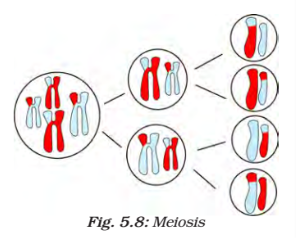The Fundamental Unit of Life
PLASMA MEMBRANE -
Outermost covering of the cell that seperates the contents of the cell from its external environment.
Allows the entry a
MITOCHONDRIA -
known as powerhouses of the cell.
mitochondria have two membrane coverings.
outer membrane is porous while inner membrane is deeply porous.
the folds increase surface area for ATP-generating chemical reactions.
Energy required for chemical activities in the cell is released by mitochondria in the form of ATP (adenosine triphosphate) molecules.
ATP is known as the energy currency of the cell.
The cell uses the energy stored in ATP for making new chemical compounds and mechanical work.
strange organelles — have their own DNA and ribosomes.
able to make their own proteins (ribosomes).
PLASTIDS -
only present in plant cells.
two types of plastids — chromoplasts (coloured plastids) and leucoplasts (white/colourless plastids).
chromoplasts contain chlorophyll (pigment) are known as chloroplasts.
chloroplasts (cell organelle) are the site for photosynthesis in plants.
chloroplasts also contain yellow / orange pigments in addition to chlorophyll.
leucoplasts are cell organelles where starch, oils and protein granules are stored.
chloroplast consists of numerous membrane layers embedded in a material called stroma. similar to mitochondria in structure.
have their own DNA and ribosomes.

VACUOLES -
storage sacs for solid and liquid contents.
small sized in animal cell whereas they are very large in plant cells.
central vacuole in a plant cell make take upto 50-60% of the cell volume.
vacuoles are full of cell sap.
provides turgidity and rigidity to the cell.
substances stored in vacuoles in the plant cells — amino acids, sugars, organic acids and proteins.
in single-celled organisms like amoeba, vacuoles contains the food items that the amoeba has consumed.
in some unicellular organisms, vacuoles may also expel excess water and wastes from the cell.
Cell is the fundamental structural unit of living organisms — each cell acquires its structure and ability to function because of the organisation of its membrane and organelles in specific ways. the cell thus has a basic structural organisation
Cell is the basic functional unit of life — cell performs functions like respiration, obtaining nutrition, clearing waste material and forming new protein.
CELL DIVISION -
New cells are formed in order to grow, to replace old, dead and injured cells. Also to form gametes required for reproduction.
The process by which new cells are formed is known as cell division.
Two types of cell division — mitosis and meiosis.
MITOSIS -
The process of cell division by which most of the cells divide for growth is called mitosis.
In this process, each cell called mother cell divides to form two identical daughter cells.
The daughter cells have the same number of chromosomes as mother cell.
It helps in growth and repair of tissues in organisms.
1 step cell division.
23 Pairs of chromosomes from the mother cell is divided into 23 pairs of chromosomes for each of the daughter cells.
MEIOSIS -
Specific cells of reproductive organs or tissues in animals and plants divide to form gametes,which after fertilisation give rise to offspring.
They divide by a different process called meiosis which involves two consecutive divisions — 2 step cell division.
When a cell divides by meiosis it produces four new cells instead of just two.
The new cells only have half the number of chromosomes than that of the mother cells.
23 Pairs of chromosomes from original cell is divided into 23 chromosomes for each of the new cells.
It is helps in reproduction.

PLANT CELL DIAGRAM -
ANIMAL CELL DIAGRAM -
